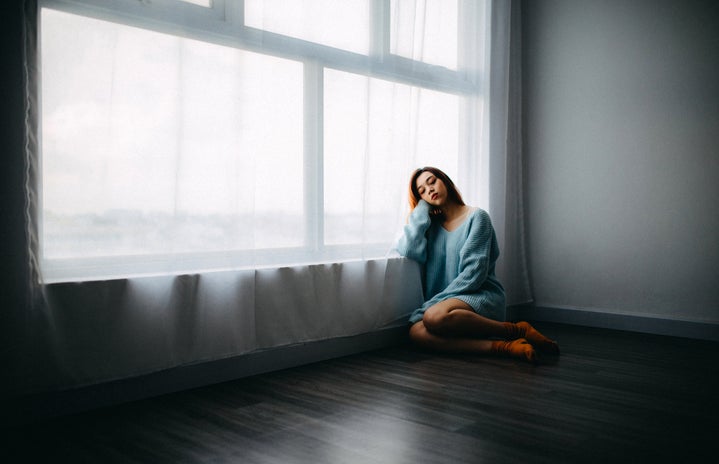“You may be an interesting person who suffers from depression, but depression is not what makes you look interesting.”
It is just one of those days when you are trying to make sense out of how you feel, and why you feel the way you do. Why can’t you remember the name of the song that has played on loop all day? Why does your coffee taste different?
You go on with your life, passing by people, and watch as untold stories play out around you. The eyes of strangers are stoic, but if you look a little closer they narrate tales of unspoken emotion- a girl too happy because her father stopped by, masking all those nights she waited on her porch, a child finding the pebble he lost 3 months ago, blocking out the fights he could hear outside his room and a writer looking for light in the caves of his mind, making all of it another escape from the vulnerability of being human. Another escape from the pain that we want to airbrush.
Before letting my thoughts get to me, I log onto my Pinterest. Upon aimlessly scrolling through my feed, I read a quote: “Death is an escape for people who have been dead inside for years”. I read it again, and the first thing that pops into my mind is, what if a person suffering from chronic mental illness reads it? I thought about how deeply it may affect that person’s thoughts. I report the post without much pondering, but the fragments of its intensity stay with me.
The things we see or read on social media play a pivotal role in shaping our subconscious and how we perceive the world around us. Online trends have become the global pillars of emerging forms of art, poetics and aesthetics. For this generation, it comes as a mandate to level up with the standards laid down by social trends to not feel left out. If we look at the digital world we have created, we can see how it governs us. With a desperate urge to fit in, we are likely to give in to the vicious cycle of romanticizing sadness and glorifying grey days. The whole idea surrounding the concept that ‘Pain makes you stronger’, ‘You can only rise once you have hit rock bottom’ or ‘Suffering is the reason behind one’s success’, has further allowed the persistence of sadness in the psyche of almost every person today. The bittersweet fact that most artists give their suffering credit for their work makes people want to deep dive into the mystery of brokenness.
In our world of suffering, artistically viewing our pain comes as an escape or a resort from the bitter reality. We create or find a faux sense of romance in our misery. But isn’t that what we have been taught? If society does not accept our sadness, isn’t it better to hide it and glorify it either internally or on social media?
When we talk about romanticizing sadness, it is important to consider how the concept behind addressing sadness has transformed over the years. The way sadness was viewed 6 decades ago is entirely different from how it’s viewed today. The dichotomy between the two visions is extreme. In the 1900s, people did not even view sadness, misery or the topic of mental health as valid emotional states let alone accept the possibility that they could be experiencing them. For them, misery was just a part of living; suffering was inevitable and co-existent with life. A person who expressed his sadness was just simply neglected and isolated by society in the name of madness or insanity. Fortunately, as years have passed, the taboo surrounding mental health has considerably declined; however, now, we are seeing the emergence of another dangerous phenomenon for today’s generation.
As we started making social media a platform for people to express their struggles with mental health, we slowly gave rise to the trend of being ‘sad online’. This has fuelled the issue of people mistaking sadness with chronic mental illnesses and using social media as a chic medium to look mysteriously aesthetic. This has overshadowed the true expression of people suffering from clinical mental and emotional disorders who may use online social platforms to seek help.
In our haste to get ahead, we often ignore the fundamental distinction between being sad and suffering from a grave mental illness. Casually calling ourselves ‘depressed’ or ‘anxious’ when we are stressed leads to the trivialization of chronic mental health disorders. Depression is not a mood, and it is not at all chic to portray it as being any less intense than it is. You may be an interesting person who suffers from depression, but depression is not what makes you look interesting. TV shows, art influencers and movies have always portrayed the poetic side of a heartbreak by propagating the idea of losing yourself in love and pain. This has made being ‘broken’ or ‘sad’ a trend for the generation. It has created a narrative in which people want to be sad to experience the aura of a newly reformed aesthetic. The idea of suffering has been made magical. Sometimes, it gives people the illusion of reaching a whole new philosophical and spiritual level; giving them an essence of supremacy. Allowing oneself to be happy might mean letting go of the comfort of being aesthetically special.
It is okay to be sad, it is okay to have grey days but it is not okay to invalidate mental illness by mistaking it for sadness. If you feel that you are not being able to address your sadness healthily, or that you may be suffering from a chronic mental illness, seek professional help. Reach out to people you can confide in, tell them how you feel, but do not give in to the toxicity surrounding the glorification of your suffering.
Romanticizing sadness does not make the pain go away.


